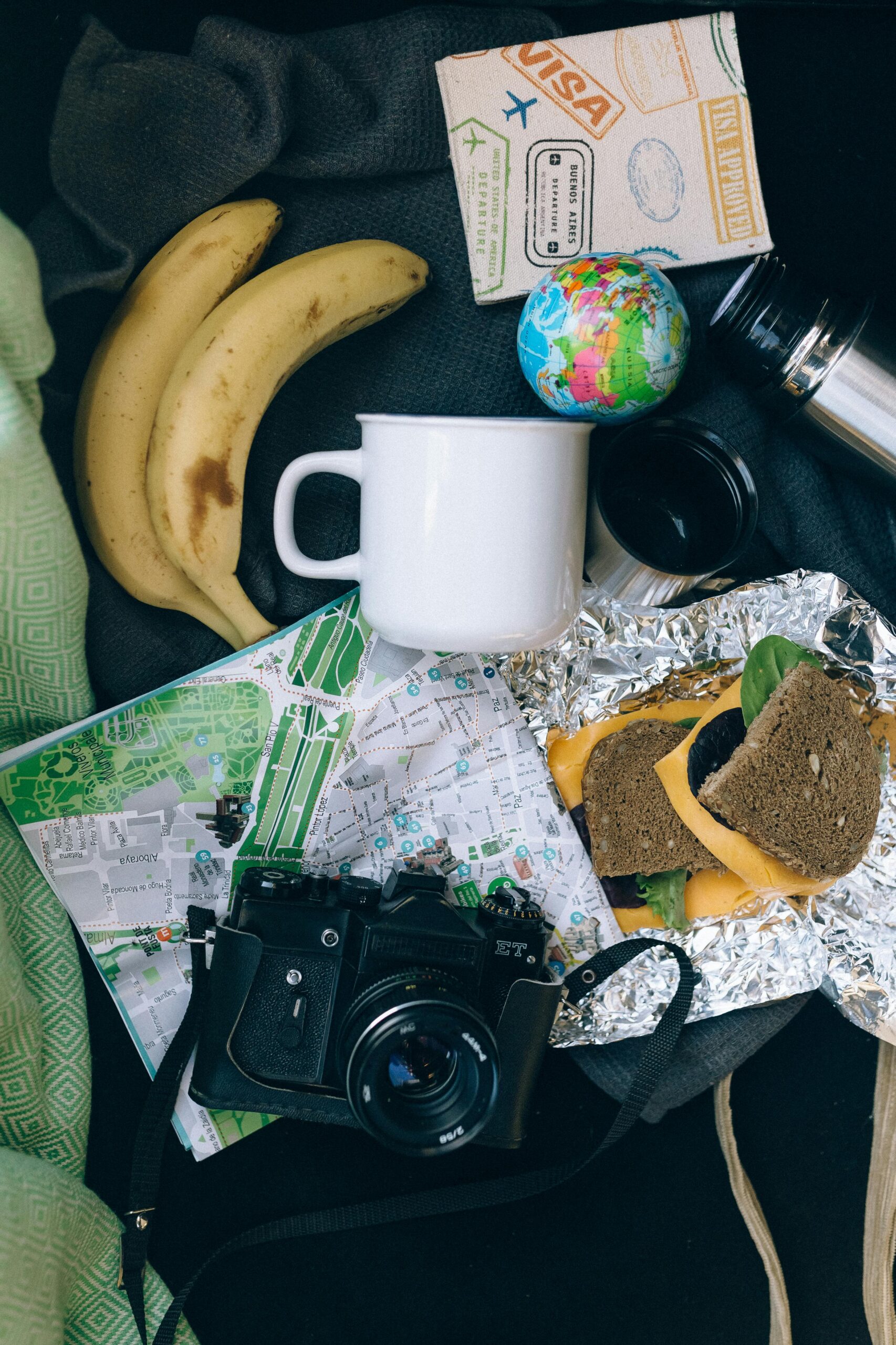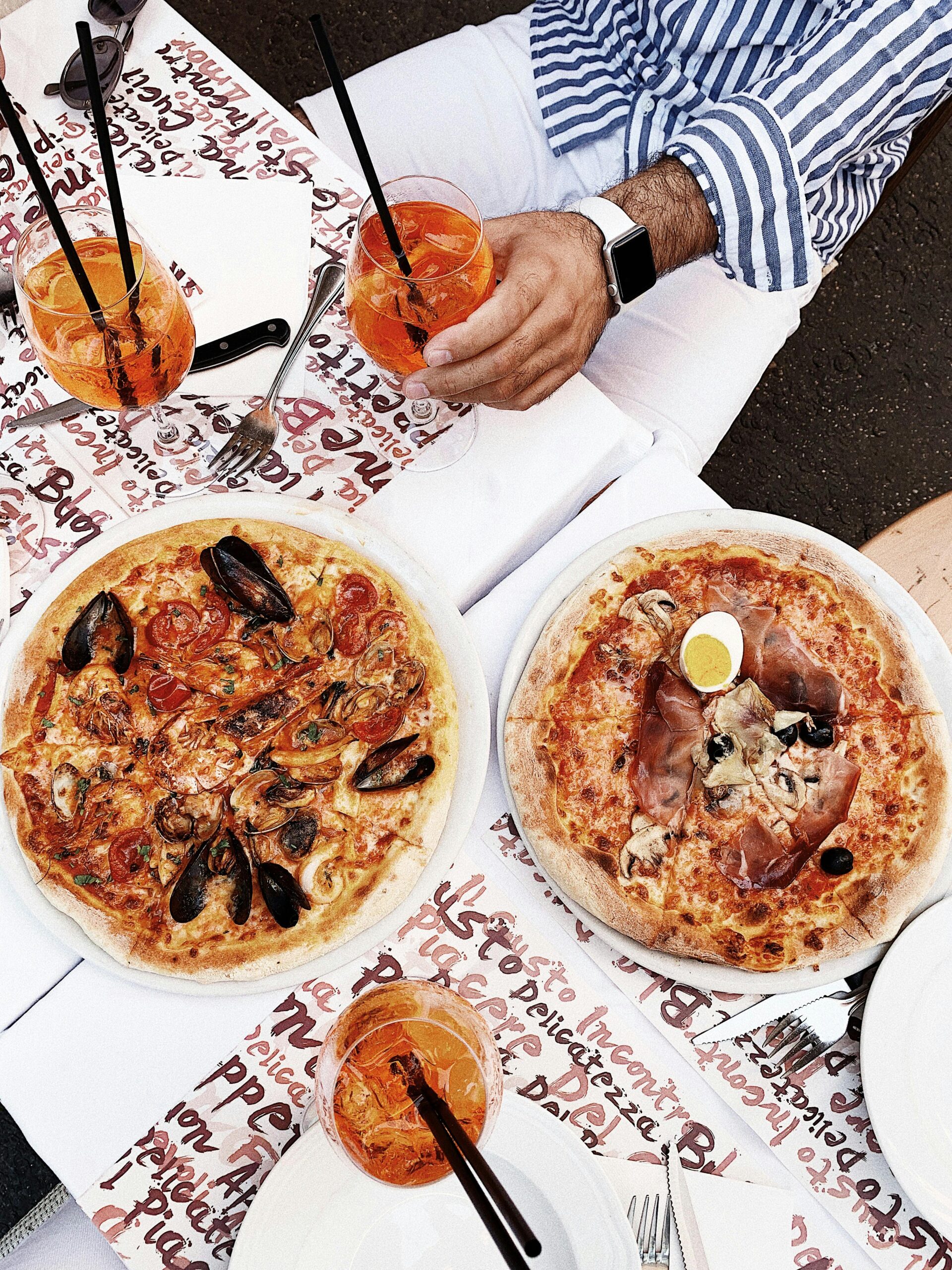What is the difference between eating while on vacation and when travelling?
Vacation eating is what I call the eating habits in which I indulge myself and my family while on vacation. This includes one or two sweets per day, soda with the dinner for my kids, more chips than usual, and lots of eating out. After a week’s worth of holiday eating, I often feel bloated and a little heavier. Vacation eating does not seem to cause permanent damage when travelling for a week. I usually recover within a few days of returning home.
I knew that we could not eat like tourists the whole time on our world tour for several reasons.
- It’s expensive to eat out on vacation.
- It is not healthy to eat for long periods on vacation.
- I feel bad after eating on vacation, and my mental focus and energy are lower.
To keep everyone happy and healthy while travelling abroad, I developed some strategies that allow you to sample the local cuisine without spending too much money. Here are some tips to help you do this.
Be proactive and plan to find healthy foods.
1. Rent a place with a kitchen.
Eating out three times a day can be expensive and not healthy. Restaurants attract repeat customers by serving food that tastes great. They also add more salt and fat to their meals than you would at home. The portion sizes are usually too big, and I tend to overeat more when I eat out. Rent a space with a full kitchen to ensure you can have at least one meal per day at home.
2. Take your essentials with you.
We love Costco black pepper. We bring it with us when we travel because it is light and adds a lot to any dish. When we travel, we also keep our own sea salt, and when driving, some good olive oils. We can make any meat or vegetable taste great with these three ingredients. You can cook a meal with almost nothing (see tip seven below). We bought a pair of knives in Aix en Provence after suffering through three months of Airbnbs with cheap, dull knives.
3. When travelling abroad, rent a place that is within walking distance of a grocery store, market, and baker.
When we move to a new city, the first thing I do is go to the local supermarket and buy basic supplies. This way, I’m prepared for when my kids say they’re hungry. We also have healthy snacks on hand. I always buy a lot of fruits and vegetables because they are usually missing when dining out. I try to visit a local baker for fresh bread we can use as toast, sandwiches or dips.
4. Purchase local produce or products that grow well in your area.
As a family, we eat a great deal of asparagus, but it was imported into Dubai, and the prices are inflated. The eggplant and squash, however, were plentiful and very cheap. These were the vegetables we chose instead of our usual. We made our Greek salads using the tomatoes, cucumbers and feta that were plentiful and inexpensive in Greece. Greece is home to beautiful strawberries. However, blueberries and raspberries (our usual staples) were hard to come by, so we opted for strawberries. The local produce is cheaper and tastes better.
5. Purchase a bag of Ice at your local grocery store.
Spend the 3 Euros to get a bag of 5 kg ice if you’re a southern woman who loves Ice. Ice makes me drink more water and is essential for cocktails at the end of the day. 😉
6. Include your children in the preparation of a local meal.
We all Enjoy the best of both worlds. We were inspired by the eggplant saganaki we had in Meteora and decided to try it at home. It’s a great way to learn and celebrate local cuisine.
7. Pack a picnic.
Picnic in a crevasse in Les Gorges du Verdon. Salami, blueberries and croissants. Balanced with Peanut M&Ms and Cheese and Onion Pringles.
It’s not clear why, but picnics always have a special feel to them. Picnics are magical. Whether you’re sitting on a picnic blanket by an old pine tree at my great-grandparents’ farm, enjoying White Castle hamburgers for 10 cents in a park with your parents in Lexington or sharing peanut butter and jam sandwiches with your kids on a hike or by a stream, they’re always a good time. A good baguette with a block of cheese, cured ham, olive oil, salt, pepper and fruit (oranges or cherry tomatoes are my favourites) and some veggies make for the perfect picnic when travelling in Europe. This is a great meal for my kids, and I consider it a balanced meal.
Do not be devoted to the concept of eating three meals per day.
8. Eat only two meals per day.
Basic bread will go a long way. A fresh loaf of toast with butter or olive oil is a favourite for our kids. It’s a great way to fill up your breakfast, lunch, or snack.
I’m a huge fan of intermittent fasting and skip breakfast almost every day. We find it convenient to provide a light, easy breakfast for our children when they wake up and then share a meal at noon.
9. Consider eating out at lunch instead of dinner to sample the local cuisine. Then, prepare a light meal at home.
We prefer to eat at home most nights because the kids are tired by evening. Lunch is also cheaper and usually less crowded. When we go out to a nice meal, we make it a point to dress up, choose the perfect place and have a special evening.
Raki Ba Raki was our favourite meal of the trip in Rethymno, Greece. It was a special place. For only $150, six of us could sample 12 dishes and eat and drink as much as we wanted.
Tips for dining out
10. Choose restaurants that offer tapas-style meals over those that serve traditional three-course meals.
This strategy is great because we get to try more foods and waste less. We end up with a lot of leftovers when our children order their meals. I would rather eat 7 or 8 different dishes than a steak. This style of dining also encourages kids to try new foods since they won’t be committing to a full dinner of something that they don’t like.
11. Find cheap local food.
We found a local Falafel shop around the corner in Amman that sold homemade falafel gyros at 1.50 Jordanian Dinar. A falafel order without the gyro cost 0.40 dinar. We could have a tasty meal for the whole family for less than $10. Our Airbnb host suggested a gyro place in Thira, Santorini, where we could get amazing lamb doner-gyros for only 3.00 Euros.
These two spots were crowded with locals, which is always a positive sign. In a more tourist-oriented area, similar places around the corner serve inferior food at triple the price. A favourite trick is to buy the meat/protein at a local place like this and then make a salad or vegetables at home.
12. Do not deny your children or yourself the local delights.
Few of these go a very long way. This creamed local honey we bought in Crete has been a great addition to many meals over the past two weeks. A bottle of Santorini dessert wines, along with local chocolates, brought me much enjoyment and satisfied my sweet craving for several days. Try it if the gelato is amazing. Baklava is a must-try if you want to experience Greece truly.
Last but not least…
13. Water is essential for your health.
It is easy to become dehydrated while travelling. I never leave home without a bottle of water. My kids seem to need constant reminders about drinking water when travelling, so I try to be ahead of the game.
Conclusions about eating abroad
It is important to experience a place before you travel. Tasting the local cuisine is an essential part of this cultural experience. These tips will help you to eat healthy and well-balanced food without going broke. Please share your best travel-eating tips below.
We improvised when we couldn’t find buns and served cheeseburgers with croissants.
We sometimes cook like our grandmothers. Pan-fried pork cutlets, like Wendi and Joey’s Nana.






Leave a Reply